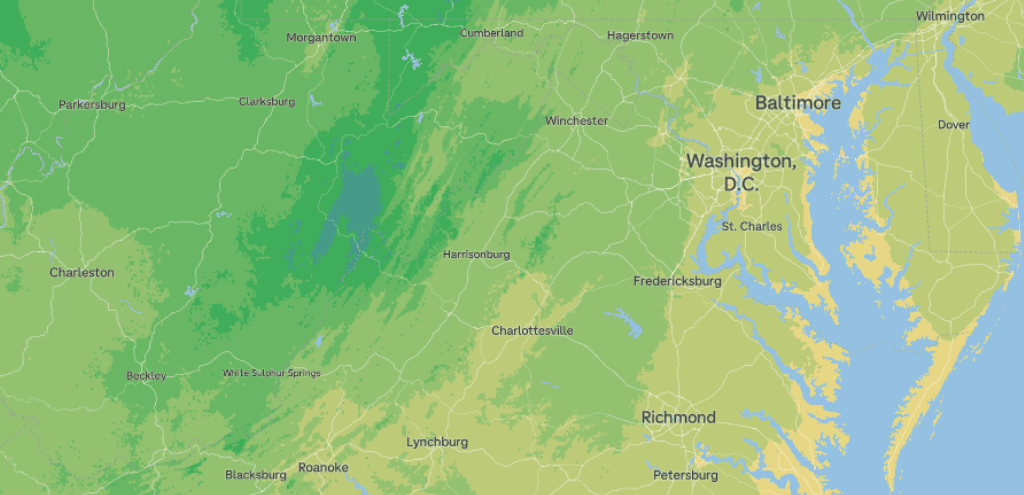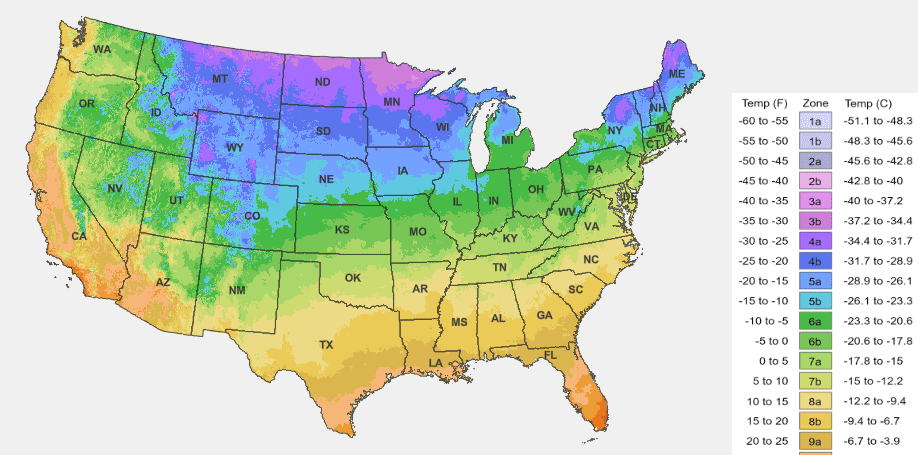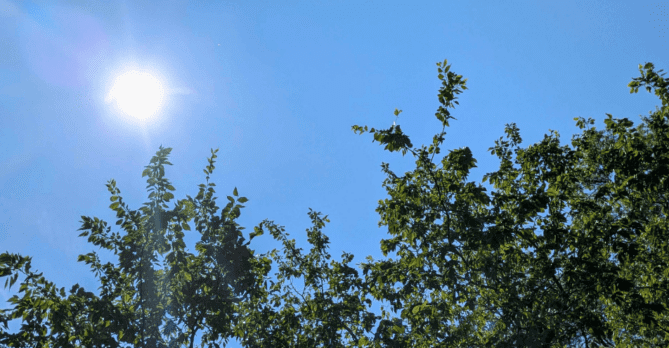
The U.S. Department of Agriculture’s (USDA) plant hardiness zone map, the go-to guide for gardeners and growers, has received its first update in over a decade. This essential tool helps determine which plants are most likely to survive temperatures in various regions. The latest update reveals a significant warming trend, which has implications for gardening and agriculture across the country.

The new 2023 map shows an average increase of about 2.5 degrees Fahrenheit compared to the 2012 version across the contiguous United States. Chris Daly, director of the PRISM Climate Group at Oregon State University, who co-developed the map with the USDA, notes that this shift has resulted in about half of the country moving into a warmer hardiness zone. This change means gardeners in these areas may now have to grow new types of flowers, fruits, vegetables, and other plants that will survive the new warmer temperatures.
Our Tree Operations team has seen the effects of this warming firsthand, with our efforts moving away from planting species such as Sugar Maple and Northern Red Oak. Instead, we’ve been striving to plant more heat-resilient species with a nativity range south of us, like Southern Magnolia, Nuttall Oak, or Southern Red Oak. By planting species that are sure to thrive decades down the road, we are ensuring the future canopy of the District.
This update is a clear indication of the broader warming trend that has been observed over the years. The scientific consensus attributes this warming primarily to human activities, such as the burning of fossil fuels like oil, coal, and gas. The summer of 2023 was the hottest on record for the northern hemisphere, underscoring the ongoing impact of global warming.
The USDA cautions against directly linking changes in plant hardiness zones to global climate change due to the variability of extreme minimum temperatures. However, the broader trend of a warming climate is undeniable and has practical implications for gardeners and farmers.
The updated hardiness zone map serves as a reminder of the ongoing changes in our climate and the need for adaptation. Gardeners across the country are already feeling the effects, as warmer temperatures alter the growing conditions for many plants. This update reminds all of us about the importance of taking action to mitigate climate change’s environmental impacts.

